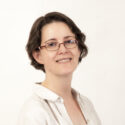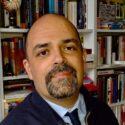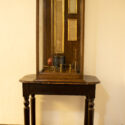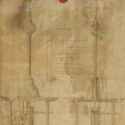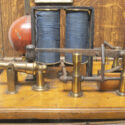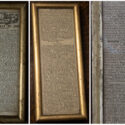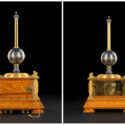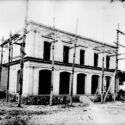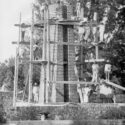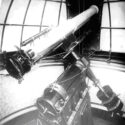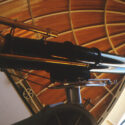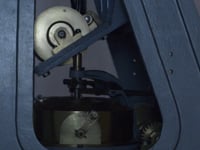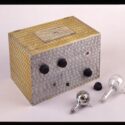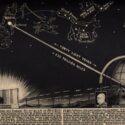Revealing observatory networks through object stories: Observatory audiences
Article DOI: https://dx.doi.org/10.15180/232006
Abstract
Like the contributions to the other papers in this collection (‘Object itineraries’ and ‘Instrumental networks’), those in this final section explore instrumental networks and object itineraries in order to tell new histories of observatory sites and their associated networks. (For a discussion of the genesis and thinking behind the collection of papers see the ‘Introduction’). Here, however, they focus on object stories that highlight the opportunities for and importance of communicating with those outside the scientific community. They show, however, a wide range of potential and actual audiences to be mediated between, from closely associated scientific institutions and those holding the purse strings within government, to groups making up the local civic society and a wider and more diffuse audience for scientific outputs and achievements. The objects explored here are an 1850s model of electrically triggered time signals, associated with those at the Royal Observatory, Edinburgh; a late nineteenth-century astrographic telescope that, with approval of scientific and governmental audiences, brought the National Astronomical Observatory of Mexico into an international project and subsequently found new audiences through public display and artistic intervention; and a photoelectric relay that advertised the Yerkes Observatory to the Chicago and visiting public by forming part of a stunt, whereby the light of a distant star triggered the lighting of the 1933 Century of Progress Exposition.
Keywords
artwork, astrographic, astronomy, Audiences, Carte du Ciel, Models, networks, object stories, observatories, observatory sites, Royal Observatory Edinburgh, scientific lectures, telescopes, time ball, time gun, time signals, timekeeping, world fairs, Yerkes Observatory
1. Models of communication: the audiences of the Edinburgh time ball and gun, by Rebekah Higgitt
https://dx.doi.org/10.15180/232006/001Introduction
I came across the object illustrated in Figure 1 by chance, on a visit to the Museum of Edinburgh on the city’s Royal Mile. It had no label and was, incongruously, in a room devoted to Scottish ceramics.[1] The first clue to its identity was to look out of the gallery’s windows, which give a view over Canongate Kirk to Calton Hill, with the Nelson Monument and its time ball. This was first installed 170 years ago, by Charles Piazzi Smyth, the Astronomer Royal for Scotland, and was controlled from the nearby Royal Observatory, Edinburgh (ROE).

Within a nineteenth-century glazed case, placed on a small table, the model demonstrates how an electric circuit can be used to drop the red-painted ball down the shaft and, simultaneously, fire the miniature brass cannon mounted in front. Closer inspection of the framed texts mounted at the back of the case confirmed the Edinburgh connection: they are three newspaper cuttings that refer to the installation of the time gun at the Castle (later known as the ‘One O’clock Gun’) in 1861. It is an object that implies the existence of an audience of viewers and readers.
Edinburgh Museums & Galleries did not have a record of the object or its acquisition.[2] However, searches in contemporary newspapers quickly made clear that models played an important role in generating interest in and support for the Edinburgh time signals from a range of different, though overlapping, audiences. At times this effort was led by Smyth and those working closely with him. At others, it was pushed by individuals and interests beyond the Observatory, eager to use or associate themselves, and the city more widely, with what it could offer and represent.
I will first set out the history of the Edinburgh time signals as revealed through a series of models that do not survive today and are clearly of different materials and mechanisms to that in Figure 1. I will then suggest a possible identification for the Museum of Edinburgh’s model. Much of this story relies on extensive reporting of public meetings and lectures, as well as other events, in The Scotsman newspaper, itself both an audience and a vehicle for knowledge about the Observatory.
Models and the making of the Edinburgh time signals
Models played a central role in the development of Edinburgh’s time signals, and the networks that brought them into existence. The first that appears in newspaper reports was based on the Greenwich time ball (erected in 1833) and commissioned by Patrick Dall, superintendent of Leith docks. He had ‘been zealously urging the adoption’ of a time ball for some years, as was noted in a supportive report to the Admiralty by Captains Washington and Vetch, Tidal Harbour Commissioners who consulted on the matter in 1846 (Anon, 1848; Kinns, 2011, p 268). The model was made of brass, and Dall also ‘circulated lithographed copies amongst his friends’ (Smyth, 1853, p 192). These were probably similar to the drawing in Figure 2, a design credited to Dall but looking very like the depiction of a model, which was presented by Trinity House Leith, probably at the public meeting attended by Washington and Vetch.
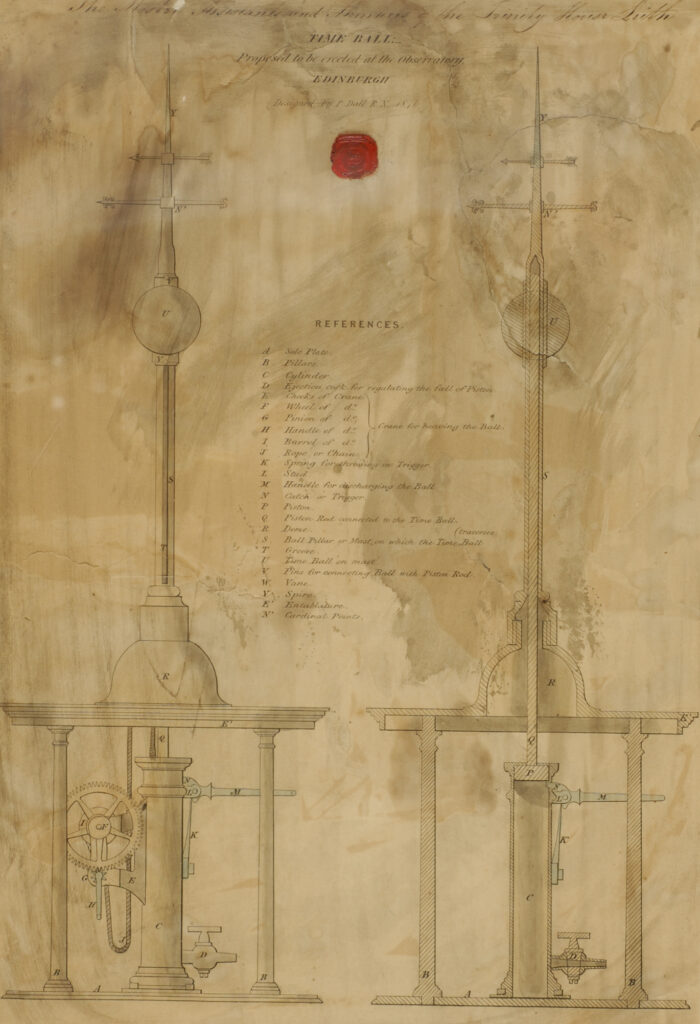
Smyth later referred to Dall’s model and images as an ‘interesting mark of this first surge of public opinion’ (Smyth, 1853, pp 191–192), preliminary to his own representations to government, the Edinburgh Chamber of Commerce, and the ROE’s Board of Visitors from 1846. However, the timing suggests continuity, and Dall’s visual aids seem to have played a role in consolidating interest among the academic, maritime and civic authorities that made the case to the Admiralty and Treasury. Dall’s model was still available to be shown to the interested audience of Fellows of the Royal Scottish Society of Arts (RSSA) in 1853, shortly after the time ball had at last been erected.
The RSSA’s hall on George Street in Edinburgh’s New Town was a key space for discussion of novel technologies and between academic men of science, engineers and scientific instrument makers. On 12 December 1853, Smyth spoke by invitation about the recently installed time ball and the trials undertaken to test its accuracy. Dall’s model made its appearance, and he was thanked for allowing its exhibition (RSSA, 1856, p 178), but Smyth had a new model that, unlike Dall’s, incorporated a novel hoisting mechanism and electrical trigger. This model, ‘nine feet high, made in wood’, showed the mechanisms for raising, retaining and dropping the ball and was depicted in an accompanying plate (Smyth, 1853, p 195; RSSA, 1856, p 266).
Smyth’s model, ‘while illustrating all the essential principles of the great time-ball’, had been ‘altered in shape so as to suit a construction in wood’. He presented this as an experiment regarding the potential effectiveness of cheaper, wooden balls. The model had, he said, ‘been constructed, during last week, by one man in the employ of Mr Gibb, house-carpenter in Leith Street, for from L.3 to L.4’ (Smyth, 1853, pp 195–196). He also noted that the magnet and battery that powered the release mechanism had been lent by Dr G Wilson. This was George Wilson, who by 1855 was president of the RSSA, professor of technology at the University of Edinburgh and director of the Industrial Museum, forerunner to National Museums Scotland (NMS). He will appear again later.
This model also made a reappearance, at the 1855 meeting of the British Association for the Advancement of Science in Glasgow. Described as large and belonging to the RSSA (Anon, 1855), Smyth again used it to describe the Edinburgh system, to an audience including men of science and a broader interested public (Clarke and Kinns, 2012, pp 62–3; Higgitt and Withers, 2008). This time, though, it was triggered by the ROE signal: Smyth had arranged, at the expense and initiative of the astronomer and former governor of New South Wales, Sir Thomas Brisbane, for larger batteries and a wire to connect the Electric Telegraph Company’s network to the Glasgow meeting rooms. The model ball was dropped every day of Association week, promoting Edinburgh’s observatory and time circuit, which sent signals to Dundee, Aberdeen and Greenock (Anon, 1855).
The RSSA hall was the site for the display of other time signal models. In April 1859, the clock and watchmaker Frederick James Ritchie’s ‘Working Model and Description of the Clock-drop for the Time-ball on Nelson’s Monument’ won the Society’s highest prize, the Reid and Auld, valued at nine sovereigns and named after the Edinburgh clockmaking firm (Ritchie, 1859; RSSA, 1861, p 118). This model illustrated planned improvements to the mechanism that made it less prone to failure due to weak batteries and allowed one rather than two individuals to operate the system.
As Ritchie noted, advanced proposals and fundraising were now in train for an audible signal. He suggested, though did not illustrate, that the same electric current that triggered the ball drop might be used to fire gunpowder in a cannon at the Castle. His actual, more complex, solution to the trigger mechanism was presented to the RSSA on 22 July 1861, on the same occasion that Smyth described his methods to ensure ‘Extreme Accuracy’ of the signal (RSSA, 1864, pp 136–159). Ritchie’s paper was ‘illustrated by a working model and experiments’, represented by three figures in print, and, again, won him the Reid and Auld prize, presented by the president, clockmaker Alexander Bryson.
Many of the models and specimens shown at the RSSA entered its museum. This could increase their potential audience to visitors or, as in the case of Smyth’s nine-foot model, facilitate reuse and loans. Unfortunately, the collection was destroyed, lost or dispersed during or after the Second World War.[3]
The Museum of Edinburgh model
None of the illustrations or descriptions of the models mentioned above match the object at the Museum of Edinburgh. Clearly it is not wooden and does not represent the Greenwich time ball or Ritchie’s delicate mechanisms. While none of the clippings mounted behind it refer to a model, it is through newspaper reports of public lectures and society business that a likely candidate, with both time ball and miniature cannon, can be identified. The story of this object shows how the campaign for the time gun entered a further set of civic and educational spaces, adding to and mutually reinforcing the project’s plausibility.
On Friday 28 January 1859, the Daily Scotsman reported that, at a lecture of the Edinburgh Philosophical Institution the previous evening,
a beautiful working-model of the time-ball, liberally furnished by Mr William Hart, the philosophical instrument maker of North College Street, was shown in action, and the same electrical current was made simultaneously to drop the ball and fire a miniature cannon (Anon, 1859).
The Philosophical Institution was described by its then vice president as a ‘recognised centre for the middle class intelligence of Edinburgh’ and ‘a nucleus for the adult self-education of the city’. Its lectures were held in Queen Street Hall at 5 Queen Street, though more popular speakers might be moved to the Music Hall, part of the Assembly Rooms on George Street, opposite the RSSA (Finnegan, 2011, pp 157–158).
Speaking to ‘a very large audience’ on this occasion was the George Wilson mentioned previously, admired for his eloquence, ‘warmth and freshness’ and ability to link scientific subjects to aesthetics and morality (Anon, 1859; Channell, 2023, p 126; Finnegan, 2011, pp 164–165). Giving the concluding lecture of a series on metals, he ‘showed, by a number of very beautiful experiments, the power of electricity in burning the various metals’ (Anon, 1859). Inter alia, he referred to the proposal to use the electric current that dropped the ball on Calton Hill to fire guns at the Castle and Leith Fort, demonstrating its viability by using the model as an ‘illustration of the project under notice’ (Figure 3) and saying that Smyth, with assistance from telegraph engineers and the military, could bring it to fruition. ‘The experiment’, readers were told, ‘gave much satisfaction to the audience’ (Anon, 1859).
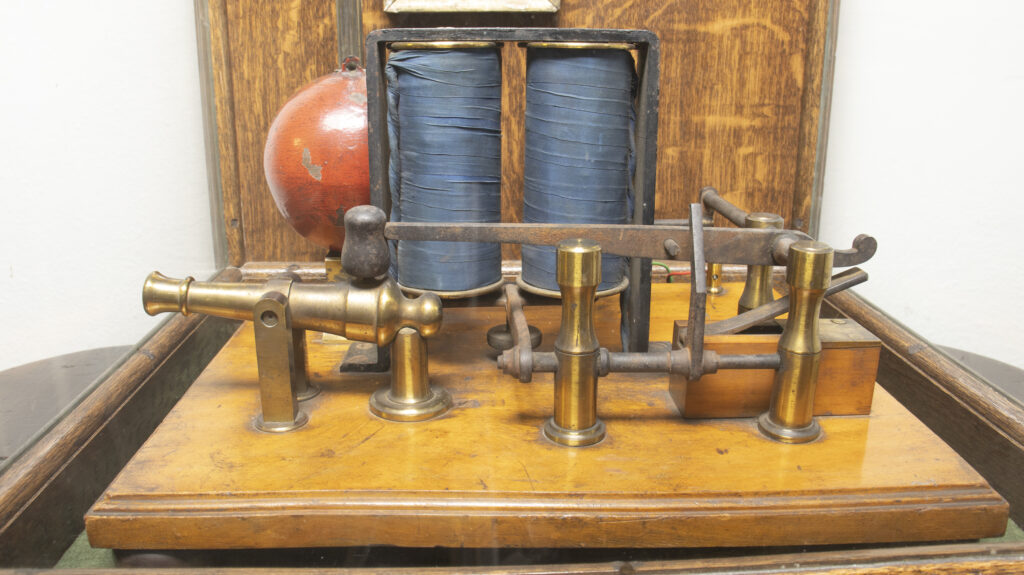
As Wilson explained to his audience, the proposal had been made by the merchant John Hewat to the Edinburgh Chamber of Commerce.[4] He promoted the idea of an audible signal to better support Leith shipping, and was central to organising fundraising efforts, including donating a significant sum of his own money, for the cost of the wire between Calton Hill and the Castle (Kinns, 2011, pp 276–277).
The maker of the model, William Dickson Hart, was based at 7 North College Street, very close to the university and the site of Wilson’s new Industrial Museum.[5] He was, like Wilson, Smyth and Ritchie, active in the RSSA, usually in relation to electrical instruments and lighting, for which he often received thanks and occasionally prizes. There are instruments by him at NMS, including a dissected model of an electric coil that he donated in 1856 and an instrument for reversing currents.[6] The latter has been identified as ‘one of a number of telegraph related items’ that Wilson commissioned from Hart, ‘in all probability used for teaching purposes’ (Green, 2012, p 88). Wilson, who had discussed electric time signals alongside the wonders of the telegraph since at least 1852, included a lecture on ‘Electrotechny’ in his university course (Wilson, 1852, pp 73–77; Wilson, 1866, p 288).
The time ball and gun model did not end up at Wilson’s museum. Indeed, Hart may have lent it to at least one other lecturer. On Friday 15 February 1861, Cumberland Hill, principal English master at Heriot’s Hospital and enthusiastic ‘scientific amateur’, spoke on ‘Electric Currents’ to an audience that included boys from the school but also city dignitaries and a Scotsman reporter. He demonstrated electrolysis, explained electrotyping, exhibited electromagnets, coils, the effect of electrical discharge in exhausted tubes and the ‘falling of a time-ball and the simultaneous discharge of a cannon’. Hart was thanked for the ‘large array of valuable apparatus used in the course of the evening’ (Anon, 1861b). As with Wilson’s lecture, the time signals were tied into an account of the still novel science of electricity, associated with thrilling spectacle and progress (Morus, 1998, pp 3–5).
A year later, Hill took his idea for ‘An Improved Time-Gun Signal’, using one rather than two batteries, to the RSSA (RSSA, 1864, Appendix, p 57). He ‘gave an illustration of this proposal by means of a model battery and gun, and the result was very successful’ (Anon, 1862b). However, a later committee report decided that, although there were some original elements to Hill’s design, it was essentially the same idea that Ritchie discussed in 1859, and was inferior to the arrangements adopted in 1861 (Anon, 1862c). If it demonstrated Hill’s novel adaptations, and lacked the time ball component, the model battery and gun was not Hart’s model, but yet another.
The Museum of Edinburgh model illustrates a mechanism that turned out not to be adequate in practice. It is not, therefore, a representation of the Edinburgh system, yet the object is tied closely to the Edinburgh context by the framed texts (Figure 4). In these, the Chamber of Commerce and the name John Hewat are prominent. One was a letter to the editor by Hewat; one notes him as the ‘originator’ of the time gun and, on the last, his name is underlined in pen (Hewat, 1863; Anon, 1862a; Anon, 1865). In the letter, Hewat shared an account of what had given him the idea for an audible time signal: a sundial at the Palais Royal that fired a miniature cannon at noon by focusing the Sun’s rays through a burning lens.[7] The miniature brass cannon in Hart’s model forms a link between the original inspiration of Hewat’s campaign and the realisation of an electric trigger.
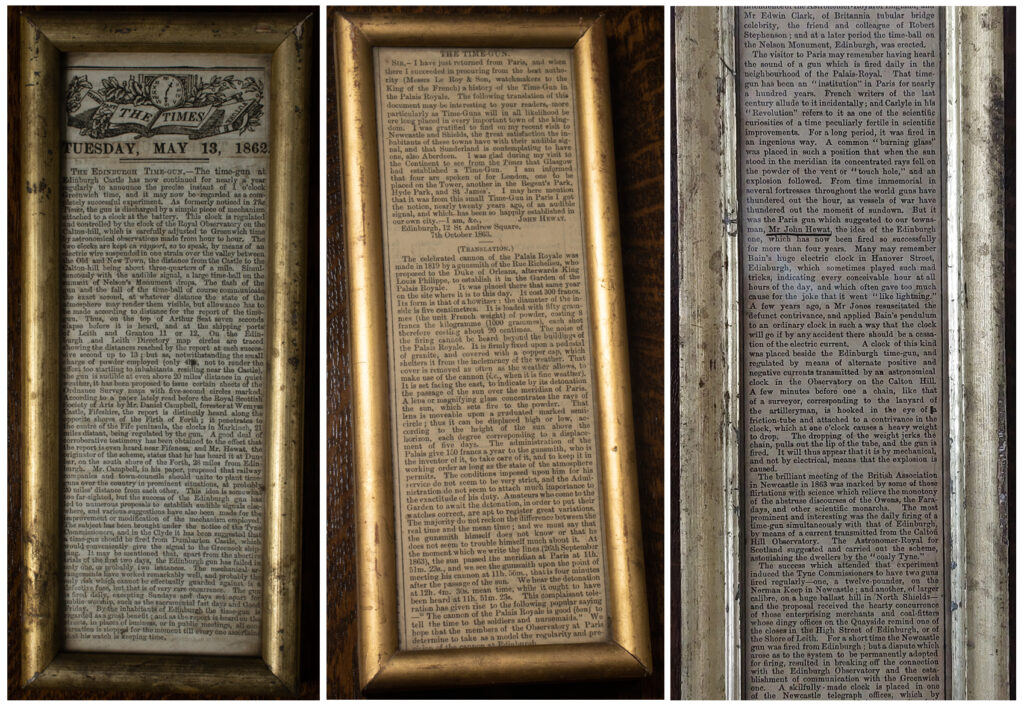
Did Hart donate his superseded model to the Chamber of Commerce in recognition of what they had done to bring the time gun into being? Perhaps Hewat bought it from Hart, turning it into a trophy that celebrated his campaign. One or other may have presented it to the Town Council, which had also supported the campaigns: they had a Museum Room in the City Chambers by at least the 1870s, to which Museums & Galleries Edinburgh trace their origins (Tyack, 2020). It is also possible that the model was displayed at another observatory: in 1869 Hart took over Short’s Observatory on Castlehill, a popular attraction with telescopes and a camera obscura (Loader, 2018, p 191). Hart added ‘a number of beautiful working models of machinery which are wrought by electricity’ and telegraph instruments ‘which the visitors are allowed to work at pleasure’ (Anon, 1870).[8] Research in the city archives may yet yield an answer.
Models and maps: time dissemination in Edinburgh
Each model discussed here was different; individually created to communicate particular information and to make an impression on different audiences. None are the same as the miniature time balls, sometimes called models, that became relatively common in the offices and shop windows of clockmakers in the early twentieth century, dropped by signals from Greenwich, the Standard Time Company or the Post Office (Heckenberg and Roberts, 2020, pp 384–385).
An early example, in gilt-brass and blue steel, with Doric columns surrounding its electrical apparatus, was acquired by NMS in 2005 (Figure 5).[9] Previously owned by Hamilton & Inches, the company that acquired the Bryson clock and watchmaking business in the 1880s, it is assumed by the style and quality to have been made and displayed by Brysons decades earlier.[10] The firm had good reason to assert a connection to observatory-accurate time signals. The founder, Robert Bryson senior, made the ROE’s sidereal clock, was consulted by Washington and Vetch in 1846 about time ball apparatus, and had taken over the Princes Street premises of Reid & Auld, who made the mean time clock that controlled the time signals (Anon, 1848; Kemp, 2022).
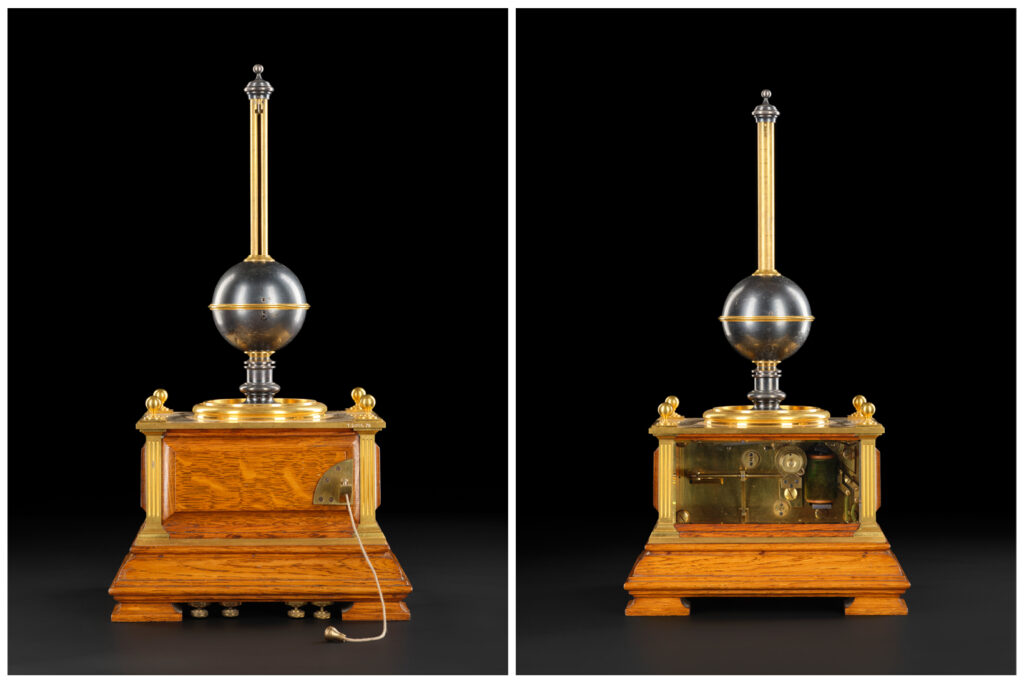
It is likely that this time ball was controlled by a clock in the Bryson shop, though it could subsequently have been connected to the Edinburgh time circuit that was established by Ritchie in the 1870s. As well as the time gun clock at the Castle, this included two clocks in the Post Office, one of which was connected to the Dundee time gun, a clock in the University and one in the Museum of Science and Art (as Wilson’s Industrial Museum had been renamed), as well as a wide range of other clocks and sympathetic dials across Edinburgh and Leith (Ritchie, 1873, pp 74–76; Ritchie, 1893, pp 12–13, 15).
Although the electric time system at Greenwich was developed from the 1850s (see Akkermans), and by the 1870s there were many time balls in use in Britain and around the world, Edinburgh’s electric time distribution was early, extensive and particularly public in nature. While the initial demand came from the maritime community, and the interests of shipping was always a primary argument for its adoption, the discussion was forwarded by those directly involved in meeting the technical challenges and by citizens with an interest in promoting the city’s education, commerce and reputation for innovation. Smyth – as director of an observatory directly impacted by choices of central and local government, the University and the wider public – was well aware of the need to seem relevant to different constituencies.[11]
A nice illustration of this is the Time-Gun Map, produced by Robert Hislop of the General Post Office for the Edinburgh & Leith Post Office Directory, ‘Communicated by Mr Hewat’ and prepared by Smyth ‘for the Time-Gun Subscription Fund’ (Johnston, 1861).[12] It was presumably also Smyth who wrote the explanation of the map. This provided two model examples that conjured up contrasting users: ‘the captain of a ship in the new dry dock at Leith’ and ‘A gentleman who had been to the top of Arthur’s Seat’, debating the accuracy of his watch with friends. Such a gentleman might be imagined attending Wilson’s lectures, watching Hart’s apparatus, developing an enthusiasm for the science of electricity and its applications, donating to Hewat’s fund and boasting of his city, regulated by the observations of astronomers on Calton Hill.
Conclusion
Prompted by the survival of an undocumented museum object, the research outlined here has not only provided a likely identification but also highlighted the importance of models in the story of the establishment of the Edinburgh time service. All models are communicative devices, but they are created for use in particular contexts and to impart different messages to specific audiences (Baker, 2004). While some of the models considered here illustrated technical detail to peers, that by William Hart was designed to excite interest by using electricity to create movement and sound, and the large wooden model repurposed by Piazzi Smyth at the BAAS demonstrated how telegraph signals could create action at a distance. John Hewat’s original inspiration, the Paris noon dial, was itself a popular spectacle, using the rays of the distant Sun to produce an explosive effect nearby (see Raposo for a twentieth-century version of such a stunt).
Hart’s model, now at the Museum of Edinburgh, can be associated with Hewat’s and Smyth’s campaigns to raise funds and to convince sufficient of Edinburgh’s citizens of the viability and benefits of their schemes, even when they involved stringing an electric wire across a large distance in the centre of the city. It, considered alongside the several other models, spotlights overlapping networks essential to the ROE’s survival, from the instrument and clockmakers who made and demonstrated them, to city officials, public lecturers and their audiences.
2. Observing a telescope: The multiple audiences in the life of an instrument, by Susana Biro
https://dx.doi.org/10.15180/232006/002Introduction
A review of the 130-year life of a Mexican telescope from the perspective of its multiple audiences reveals much about the instrument and its changing surroundings. When acquired in the late nineteenth century, this photographic refractor was similar to all those used for the Carte du Ciel project. During its extended life it has experienced a variety of transformations: it participated in numerous astronomical projects, was abandoned several times, travelled as part of an expedition, has been the subject of science popularisation and, most recently, art. My purpose in writing the biography of this scientific object (Daston, 2000, pp 1–14) is not only to reveal its interesting life, but also that of the astronomers who used it, the sites where it has been placed and the country where all of this happened. Entwined with this history there will also be instruments, astronomers and observatories from other countries that should reveal the networks in which it has existed.
There are many perspectives from which this long life can be studied. In this essay I concentrate on the various audiences who witnessed its acquisition and different uses through time (Wintroub, 2010, p 779). I use Morus (2010) and his perspective of performance in science as a starting point and add instruments into the complex set of elements involved. Broadly speaking, this telescope – named Carta del Cielo, after the first project it was used for– has had three kinds of audience: the Mexican government, the astronomical community, and the general public. In what follows, these audiences will be highlighted and explained in different periods and contexts.
European astrometry
The Mexican National Astronomical Observatory (OAN) was established in 1878 (Biro, 2010). Although the full-time practice of astronomy had only very recently begun in the country, astronomers – who were originally geographical engineers[13] – were connected to several international communities. They joined in the concerted observations of the 1874 transit of Venus and hosted several expeditions in 1882, when a second transit was visible from Mexico. As part of the International Association of Geodesy, Mexico participated in several of their conferences in the nineteenth century. During this period, they were also involved in a constant exchange of publications, which kept Mexican astronomers up to date while also making the international community aware of them. Moreover, in 1882, Ángel Anguiano – first director of the OAN – visited a dozen observatories in Europe, thus extending their network of connections even more (Anguiano, 1882, pp 1–15).
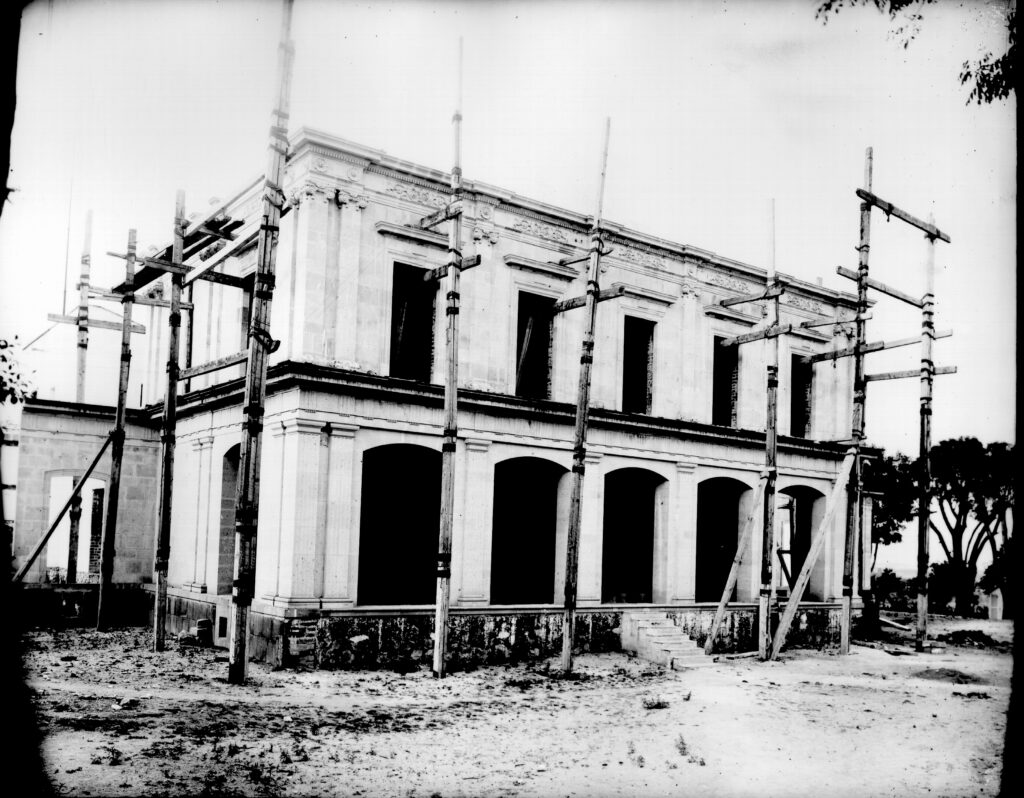
From its invention, photography was naturally of great interest to astronomers, and by the end of the nineteenth century it was being used in many ways. In 1887, after several experiments, Anguiano circulated prints of an especially good photograph of the Moon to his contacts asking for feedback. Among others, he sent it to the astronomer Bouquet de la Grye, whom he had met when a French expedition came to Mexico for the 1882 transit of Venus. This photo arrived shortly after the First Astrographic Conference had been held in Paris, where the international Carte du Ciel project, to create a stellar map and catalogue of the complete sky by means of photography, had been discussed and set in motion (Turner, 1912, pp 1–30; Chinnici, 2008, p 19). De la Grye showed the picture to Ernest Mouchez, director of the Paris Observatory and the project, and he promptly wrote to Anguiano inviting Mexico to participate.
This letter was forwarded to the Mexican president, Porfirio Díaz, stressing the importance of the OAN taking part in this international project. Mexican astronomers had received support from the government twice: even before having an observatory, ample financial resources were given to the 1874 transit of Venus expedition to Japan. A few years later, partly as a result of this successful expedition, funds were granted for the foundation of an observatory: a site was assigned, Anguiano was named director, and he was given financial support for an extended trip to Europe to visit several observatories and order the necessary instruments. This tour of observatories was not uncommon at the time (Raposo, 2013, pp 70–104).
President Díaz agreed to give support for participation in the Carte du Ciel project as he was interested in developing science in the country and projecting a positive image of Mexico abroad. Once again, Anguiano travelled to Europe, where he attended the Second Astrographic Conference in Paris, met the participants, and became acquainted with the basic definitions and procedures. Unable to commission the telescope from the Henry brothers (of the Paris Observatory) because they had too many orders, Anguiano turned to the Irish instrument makers Grubb and Sons, who had previously made telescopes for the OAN. For the results to be comparable, the new instrument had to be in line with the definitions established by the project committee. This was an astrographic telescope with a 33-centimetre objective lens and a 3.43 metre focal length. On his return home, Anguiano began the construction of a tower for the new telescope and set up a larger photographic department.

After a long maritime voyage from Dublin to the port of Veracruz, and then by train to the Observatory, the telescope was installed and tested, and the work of exposing photographic plates for the map and catalogue began. There were some initial problems, mostly due to a defect in the objective lens doublet,[14] but this was sent to Alvan Clark in the US for repair, and by 1900 good plates were being taken (Gallo, 1923, pp iii-v). For the printing of the stellar maps, copies of the photographic plates were sent to France to be made into engravings, a process that was quite expensive. For the catalogue, a long series of measurements and calculations were necessary, which was very time consuming. The final recipients of these two products were intended to be the other participants in the project and the astronomical community in general but, by the time they were ready, newer technologies had been developed and astronomy had turned elsewhere.

For the Mexican astronomers, collaborating in this international project meant being inserted into the global astronomical community, which at the time was centred in Europe. Hence, they could keep up to date on current photographical astronomy and had numerous interlocutors regarding any other astronomical subject. On the other hand, for the government, this was yet another way of being recognised, inserted into the international community of their time.
American photometry
The beginning of the twentieth century brought many important changes for the Observatory. The Mexican Revolution, a civil war begun in 1910, ravaged the country and ended with a new government, with very different priorities. Although the OAN survived this convulsion, it was relegated to a point almost of abandonment.[15] The directors of this period continued work on the Carte du Ciel project only with great difficulties. In 1912 the observations necessary for both the map and the catalogue were finished, and the telescope lay idle.
At the same time, astronomy was changing worldwide. Many observatories were now dedicated to astrophysics,[16] and the most important of these were in the United States. Due to its proximity, Mexican astronomers could easily travel to the US to visit observatories and learn the new subjects and techniques. In 1942, with support from both the government and the Harvard College Observatory, a new astrophysical observatory was established at Tonantzintla (OAT), in the state of Puebla.
As of 1949, Guillermo Haro directed both the OAN and the OAT and cultivated strong ties with several US observatories. Given the OAT had one of the few Schmidt camera telescopes of the time, and it was in the southernmost position, many astronomers were eager to use it. Prominent among them in the first years was William Hiltner, from Yerkes Observatory in Chicago. Hiltner travelled to Tonantzintla to complement his observations of stellar polarisation (Siqueiros, 2021, p 52).
Haro was very interested in increasing the kinds of observations made at the observatories he oversaw, especially spectroscopy and photometry, and this was not possible with the Schmidt. Perhaps because it was the only telescope still in working order by then, the Carta del Cielo had been moved from Tacubaya to Tonantzintla, housed in a tower like its previous one and adjusted for the slight change in latitude. Now Haro began to think about adding instruments to it.
As Haro was especially interested in photometry he sent personnel to the US to learn about instruments and practices. Hiltner hosted Braulio Iriarte, one of Haro’s main assistants at the time, in Chicago; he also taught Mexican astronomers while observing in Tonantzintla. Soon after this, Hiltner offered to have a photoelectric photometer built for them at Yerkes. The funds required were approved by the Dean of the National University of Mexico (UNAM) and arrived in 1952. This new instrument was attached to the Carta del Cielo and used by Iriarte as practise.[17]
In this period, the next generation of Mexican astronomers turned to a new government for financial support, which was granted for purely political reasons (Bartolucci, 2000, p 102).[18] These astronomers looked to the US for scientific and technical guidance. Thus, we have a similar situation to that of the nineteenth century, where Mexico looked to its government and beyond its borders, though with new actors. The Carta del Cielo telescope was essential for the first attempts of doing photometry, which led Mexican astronomers into the practice of twentieth-century astronomy. Nevertheless, Haro’s long-term plan was to acquire a large reflector telescope, to which both photometers and spectrometers could be attached. When the one-metre reflector and a photoelectric photometer designed for it arrived, the Carta del Cielo was once again abandoned, but not dismantled.
A Mexican expedition
On 7 March 1970, a total solar eclipse was visible from the central part of Mexico. This event brought expeditions from all over the world to the state of Oaxaca and, especially, to a little town called Miahuatlán. From later reports we know that most of these expeditions consisted of solar astronomers wanting to take spectra of the corona (e.g. Menzel and Pasachoff, 1970, p 1143). Although coronagraphs (which can block the Sun’s disc at any time) existed, the best time to observe the solar corona was still during a total eclipse.
Unlike most expeditions, the astronomer Manuel Méndez, of the Institute of Astronomy belonging to the UNAM, and some colleagues in the US planned to photograph the stellar field surrounding the Sun. They wished to measure the deflection of starlight by the mass of the Sun, as predicted by Einstein’s Theory of Relativity. They chose to take the Carta del Cielo, and proceeded to disassemble the optics, the equatorial mount, and the electric motor it now had, and move all this from Tonantzintla to Miahuatlán, where a steady base for the telescope was constructed and the parts were reassembled. Unfortunately, the motor failed at the time of the eclipse, and no images were taken.
Although no scientific results were achieved with the Carta del Cielo in this expedition, the telescope was seen by the numerous members of the public present. News of the coming eclipse had spread widely in Mexico, through newspapers, radio and television. The Institute of Astronomy was in charge of receiving visiting astronomers, as well as informing the public about the event. Many physics students at the University volunteered for these tasks. For instance, Rafael Costero had to deal with the press and make sure no unauthorised person went near the astronomical campsites.[19] He also witnessed the crowds of spectators (mostly from Oaxaca, but also from all over the country) who went to witness this natural phenomenon.
Despite this expedition not serving the desired purpose for Méndez and his colleagues, it took the Carta del Cielo outside the Observatory and placed it in a public space to be viewed by all onlookers. On that day, the eclipse was the main spectacle, but the telescopes and astronomers of the many expeditions were also on show. Further exploration of newspapers around the date of the eclipse will likely show the effect of this event on the public (Biro, 2014, p 744).
Today and tomorrow
After the 1970 expedition, the Carta del Cielo remained disassembled and abandoned, this time for almost three decades. In 1999, Oscar Chapa, who is part of the instrumentation department of the Institute of Astronomy and had admired the instrument for years, restored it to full working order: the stained optics were repolished, some missing parts of the clockwork were remade, and the telescope was reassembled and tested.[20]

Since then, the telescope has been shown to the visitors to the Tonantzintla Observatory. Although the photographic part of the telescope cannot be used, it is possible to point to a star or planet and look through the guiding telescope. Today, this nineteenth-century telescope is impressive for the general public, and especially for amateur astronomers who are as interested in instruments as in celestial objects. José Peña is the director of the Observatory and Arturo Rentería is responsible for the site. Rentería says they are visited by groups of school children, the elderly, physics students who come to use the other telescopes, and Latin American students who attend the yearly observational school organised by Peña.[21]
The latest role of the Carta del Cielo has been to inspire the conceptual artist, Ale de la Puente. Interested in time and space, de la Puente finds this instrument particularly attractive. She designed an artistic piece involving a soundscape and a theatrical recreation of an observation. This piece has a totally new audience: people who are not necessarily interested in astronomy.
In November 2022, there was an ‘expedition’ to visit and use the Carta del Cielo. The participants were Oscar Chapa (restorer), Arturo Rentería (responsible for the site), Ale de la Puente (artist) and me. Several ideas were initiated for the future of this telescope. De la Puente will continue to show her artistic piece and is currently preparing a new one. Chapa will do some more maintenance work to get the clockwork going again. Rentería and I are thinking of ways of telling the history of the telescope to the visitors.
Conclusions
The life of the Carta del Cielo can roughly be divided into two periods. From its beginning until 1970, it aided astronomers in their scientific work. In this period, it also helped to get attention and support from the Mexican government and the international community. The eclipse expedition constitutes a break when it involuntarily began work as an aid to popularisation. Since then, its job has been related to the general public.
The audiences of the Carta del Cielo have changed with the circumstances surrounding it. Because science in Mexico is generally financed by the government, throughout its life it has depended on state support. At different moments, either the government or the National University were persuaded to aid astronomers in their diverse projects, and in exchange they obtained a means to project a positive image of the country. During its scientific period, another audience of the telescope was the international astronomical community. This is especially clear in the Carte du Ciel project, where Mexican participation integrated them into a vast network of observatories and astronomers. After the eclipse expedition of 1970, the telescope was no longer useful to astronomers in producing science. Fortunately, it was not discarded. It has since been restored and has been seen by numerous visitors to the Tonantzintla Observatory. Today it is also part of an artist’s reflections on time and space, and this has attracted a new kind of audience.
Despite its many displacements and periods of abandonment, the Carta del Cielo is alive and well today. In my conversations with Oscar Chapa, who loves the instrument, he suggested it deserves to be placed in a museum. Unlike him, I believe it is better off still working, exposed to the variety of audiences that have made it what it is.
Acknowledgements
I would like to thank Isabelle Marmasse, Cristina Siqueiros and Rebekah Higgitt for their helpful comments on the initial manuscript.
3. Harnessing starlight in times of depression: astronomy, technology and spectacle in the opening of the Chicago Century of Progress Exposition, by Pedro M P Raposo
https://dx.doi.org/10.15180/232006/003Introduction: opening a shiny ‘black box’
Among the many shiny brass artefacts in the collections of the Adler Planetarium in Chicago, which include a plethora of sundials, telescopes and astrolabes, one metal artefact stands out for its apparent uniqueness in this context. Although equally shiny, it is, at least at first sight, a much less compelling object, consisting essentially of a box with a few knobs, one switch, and an indicator light (Figure 1). A plaque affixed to the top of the metal box provides some clues on its origin and purpose, reading as follows:
Photoelectric relay for opening the “Century of Progress Exposition” Chicago, May 27, 1933 with light of Arcturus. Made at Yerkes Observatory Williams Bay, Wisconsin with the cooperation of the General Electric Co.
The joint reference to a major world fair, an observatory commanding the largest refracting telescope ever used in astronomical research, and a leading electric company hints at the complex nature of this artefact, suggesting that more than some contraption to help advance astronomical research, this was an object meant to connect the heavens and Earth, distant stellar realms and mundane affairs, knowledge and entertainment – an object of science, technology and spectacle.

The photoelectric relay, with the accession number G-34a in the Adler’s collections, was used in a stunt performed during the official opening of Century Progress, and allegedly every evening for the whole duration of the fair (May–November 1933, then May–October 1934). The stunt consisted of switching on the fair’s lights using starlight captured at Yerkes Observatory (with three other observatories serving as a back-up) with a photoelectric cell attached to the Yerkes’s 40-inch refracting telescope (Figure 2). The resulting electric signal was relayed to the Century of Progress grounds via telegraph wires (Havlik, 2006, p 99). The original source of light was the star Arcturus, chosen not only because of its visibility in the Chicago latitude during the spring and summer nights, but also for a symbolic reason: the distance of Arcturus was then reckoned to be forty light years, meaning that light collected in 1933 would have left the star during another major event in Chicago’s history: the Columbian Exposition of 1893, the city’s first world fair.

The tube and mount of the 40-inch telescope (which was later fitted with optics by Alvan Clark & Sons) had been featured at the Columbian Exposition. But the latter and Century of Progress were significantly different in their purpose and message, and so was the way the telescope was used in the two fairs. America’s economy as well as its social and technological landscape had also been changing, and the same applies to astronomy and its instruments. In fact, once a badge of America’s prowess in metallurgy, optics and mechanics, and a promise of great scientific achievements to come, the 40-inch refractor was now a long-outdated instrument, superseded by more powerful reflecting telescopes. However, when coupled to the photoelectric cell, it gained a new significance as a tool of research and, importantly, also as a tool of spectacle. This is where G-34a became a crucial implement, as it made it possible to amplify and further transmit the electric signal produced with the light from Arcturus; in short, to connect stars, observatories, communications networks and a major event that celebrated science and entrepreneurship as a motor of progress.
Light, colour and technoscientific optimism in Century of Progress
While European and British world fairs tended to showcase imperial domain and expansion, American fairs promoted the alliance between science, technology and the modern corporation as the key to prosperity (Rydell, 1993, p 10). The Columbian Exposition ran from 1 May to 30 October 1893 on the South Side of Chicago (near the present campus of the University of Chicago). Themed around the 400th anniversary of Columbus’s arrival to the so-called ‘New World’, it was meant to extoll industrial development and economic growth in the United States during the preceding decades (Rosenberg, 2008, pp viii–xi). Known as the ‘White City’, the fair became a sensation with its lavish display of temporary neoclassical buildings. Grandiosity and gigantism spoke of economic vigour, with the exposition sporting what was presented as the largest roofed single structure ever built, the Manufactures and Liberal Arts Building. In its vast interior space, and amidst displays of goods and crafts from around the world, stood the tube and mount (built by the Warner & Swasey firm) of the 40-inch refracting telescope bound for the new Yerkes Observatory.
While the Columbian Exposition celebrated the economy of the present with references to an idealised past, Chicago’s second world fair was more forward looking. Like its predecessor, Century of Progress was planned around a historical celebration, namely, the centennial of Chicago’s incorporation as a town in 1833. However, its overarching rationale was to showcase the wonders of a bright future grounded on the alliance between science, technology and entrepreneurship, a message encapsulated in the fair’s unofficial motto, ‘Science Finds, Industry Applies, Man Conforms’ (Century of Progress, 1933).
The astronomer George E Hale (1868–1938), founder and former director of the Yerkes and Mount Wilson observatories, and a prominent player in the US National Research Council, proposed that the new Chicago exposition focus on the services of science during the past 100 years (Lohr, 1952, p 14). Science was certain to gain a prominent place in Century of Progress, which started to be planned in 1927. But as the effects of the Great Depression ravaged America and the world, it became ever more urgent to use major events such as world fairs as beacons of hope and optimism. Light and colour (as opposed to the ‘White City’ of the Columbian exposition) became the prevailing symbolic elements in Century of Progress’s aesthetics. Accordingly, its focal point for scientific endeavour and promise, the Hall of Science, was decorated with allegorical sculptures of mythic figures representing concepts such as energy and light. Like most of the principal buildings in the Exposition, the Hall of Science was a modernist structure with practically no windows, relying on artificial lighting. In the Columbian Exposition, electricity featured as a promising new technology; four decades on, it constituted a hallmark of progress and modern life. If, by the early 1890s, large buildings and gigantic manufactured items such as the mechanical components of the Yerkes 40-inch refractor served to affirm the unlimited potential of American industry and enterprise, the grim beginnings of the 1930s required an even bolder message – that American entrepreneurial spirit could be taken to a cosmic scale. Since light, electricity, and colour were major features of Century of Progress, photoelectric cells were the technical contrivance that could bring all of these elements together into a grand opening for the Exposition.
Photoelectric cells, astronomy and spectacle
Photoelectric cells were initially produced and used chiefly as components for other devices. In the 1920s, they became an object of technological research and entrepreneurship in their own right. Known as ‘electric eyes’, they represented a somewhat amusing and fashionable technology used in automatic doors and in functions such as tracking customer traffic in commercial spaces. The public appeal of ‘electric eyes’ did not pass unnoticed by companies such as General Electric, which, as hinted by the plaque on the photoelectric relay, was one of the players in the Arcturus stunt. By the early 1930s, General Electric and other technological firms were actively exploring the allure of photoelectric cells, sponsoring public demonstrations and leading advertising campaigns that promoted these devices (Johnston, 2011, p 211). By that time, astronomers were well-acquainted with photoelectric cells, which had fostered a new subfield called photoelectric photometry. The latter entailed the quantitative measurement of a star’s brightness using the weak electric currents generated by its light, and represented a significant advancement over visual photometry, where astronomers had to rely on their own eyes for subjective comparisons between a given star and a standard artificial star.[22]
Discussions about an opening for Century of Progress that involved the lighting of the fair in some spectacular way had been underway since at least 1929. Around that time, the Exposition’s Subcommittee on Astronomy agreed to cooperate with a ‘stupendous spectacle’ in which electric lamps would be sequentially lit by control devices similar to those used in advertising signs.[23] Among the members of the subcommittee were Edwin B Frost (1866–1935), former director of Yerkes Observatory, and Philip Fox (1878–1944). Fox was then leading the Adler Planetarium, inaugurated in 1930 and now bound to become a major scientific attraction in Century of Progress (Raposo, 2019, pp 101–104).
In 1931, Frost suggested to Fox the idea of capturing the light from Arcturus at Yerkes with a photoelectric cell coupled with the 40-inch refractor and then relaying the resulting electric signals via the telegraph network. It was enthusiastically adopted (Havlik, 2006, p 99). Fox took the lead in all the necessary negotiations, while Frost took care of the scientific aspects. The 40-inch telescope at Yerkes already counted on a photoelectric apparatus assembled in 1929 by the astronomer and leading expert in photoelectric photometry, Joel Stebbins (1878–1966) (Osterbrock, 1997, p 137). Christian T Elvey (1899–1970), who had worked with Stebbins as a graduate student, was entrusted with the practical photometric operations at Yerkes on the evening of the grand opening. G-34a was then assembled to be placed in the telescope dome and connected to the photelectric cell during the stunt. It would receive and amplify the electric signal generated by photoelectric cell with light from Arcturus, making it strong enough to be redirected to the grounds of Century of Progress via the telegraph network.
Astronomy had been represented at world fairs since the first major event of the kind, the 1851 Crystal Palace exhibition.[24] The Columbian Exposition of 1893 had featured not only the tube and mount of the Yerkes 40-inch refractor, but also a working observatory and timekeeping station run by the US Naval Observatory. Now that astronomers were increasingly detached from utilitarian affairs such as timekeeping and navigation, probing distant galaxies in an expanding universe with ever more powerful telescopes, the old 40-inch would partake of a spectacle that brought the heavens down to earth.
A technoscientific fiat lux: the opening of Century of Progress
The official opening of Chicago’s Century of Progress Exposition, on the evening of 27 May 1933, attracted a crowd of 30,000 to an open-air court in front of the Hall of Science. After a grandiose musical performance, the audience was presented with speeches by Rufus C Dawes (1867–1940), the head of the Exposition, and then the astronomers Frost and Fox. The sound of the festivities could be heard erupting from speakers scattered around the fair and, for those unable to come to the exposition grounds, in a special radio broadcast.
Although the Yerkes 40-inch refactor was the main instrument, the Arcturus operation relied on a backup of three observatories: Urbana (Illinois), Allegheny (Pittsburgh, Pennsylvania), and Harvard (Cambridge, Massachusetts). Each observatory was expected to have its main telescope coupled to a photoelectric cell and a relay, and to be ready to send signals of Arcturus light converted into electricity to the Century of Progress Exposition grounds.
After the speeches, the gaze of the audience was directed towards an illuminated panel above the rostrum showing a map with the location of the four observatories. As Philip Fox took the lead of the proceedings, and each observatory was pronounced ready, the respective mark was highlighted by a circle of light on the map. Then a star appeared in the centre of a flaming circle. Finally, a switch was thrown, triggering a searchlight at the top of the Hall of Science. The white beam started to move slowly from one building to another. Upon being touched by the beam, each building burst into a colourful display of light.
The Arcturus stunt was one of several technoscientific tricks performed in Century of Progress. At the time, showmanship was favoured as a way of promoting businesses by showcasing apparent miracles and wonders before an audience regarded as simpleminded (Nadis, 2005, p 189). General Electric, one of the sponsors of the stellar stunt, even hired a magician to perform tricks during Century of Progress. However, no spectacle seems to have been as compelling and crowd-pleasing as the lighting of the fair, to the point that it was allegedly performed every evening during the two seasons of the Exposition. This has raised several doubts about the astronomical feasibility of such a demanding schedule.[25] But whether fairgoers were seeing the action of starlight converted into electricity, or simply the effect of an exposition worker pressing the right switches, the symbolism and allure of the stunt remained untouched. As they pleased the general public, the astronomers involved in the stunt also showed to their peers that even the old refracting telescopes they had in their observatories acquired a new meaning and potential for research when used together with newer technologies such as the photoelectric cell. And technological entrepreneurs were further reminded that astronomers were not only clients, but also potential partners and advisors with a valuable expertise to offer to their ventures.
Concluding remarks
G-34a and its historical significance are yet to be fully unboxed. A fuller picture of its design and construction as well as a finer understanding of its technical details and actual use in (and possibly beyond) the Arcturus stunt will require further research. What is clear is that, even though G-34a was just one component in the circuits meant to harness celestial light through the mundane electric networks that powered Century of Progress, this artefact is highly representative of how the idea of connectedness was central to the whole operation. At a distance of 40 light years (actually 37 according to more recent measurements), Arcturus was not beyond the reach of human inventiveness; within its dome more than 90 miles north of the Exposition grounds, the Yerkes 40-inch refractor with the attached photoelectric cell and relay were key elements in the stunt; and lest something failed at Yerkes, other faraway observatories (Allegheny, Harvard, Urbana and, later, a small observatory in Elgin, Illinois) were equally connected and ready to step in, further stressing how astronomers in different observatories worked together in a constant surveillance of celestial phenomena and how electricity and communication technologies such as the telegraphic network empowered them to do so. Those who could not attend the opening of the fair or find a place next to the Hall of Science could still follow the proceedings through the exposition’s sound system or on the radio. The infrastructure making all of these connections viable was not a purpose-made system, but simply the existing telegraph network. Overall, the stunt showed that astronomy and its practitioners were not divorced from mundane affairs. On the contrary, they mastered and advanced technologies that were gaining an ever greater importance in modern life – electricity, public illumination, telecommunications, photoelectric cells, which the astronomers involved with the organisation of Century of Progress helped promote, or at least saw being actively promoted as the programme and offerings of the exposition developed. And their ability to connect all of these different parts, while merging terrestrial and cosmic scales, constituted an affirmation of the unlimited scope of human endeavour that was central to the Century of Progress message of a better future grounded on the alliance between science, technology and entrepreneurship.



